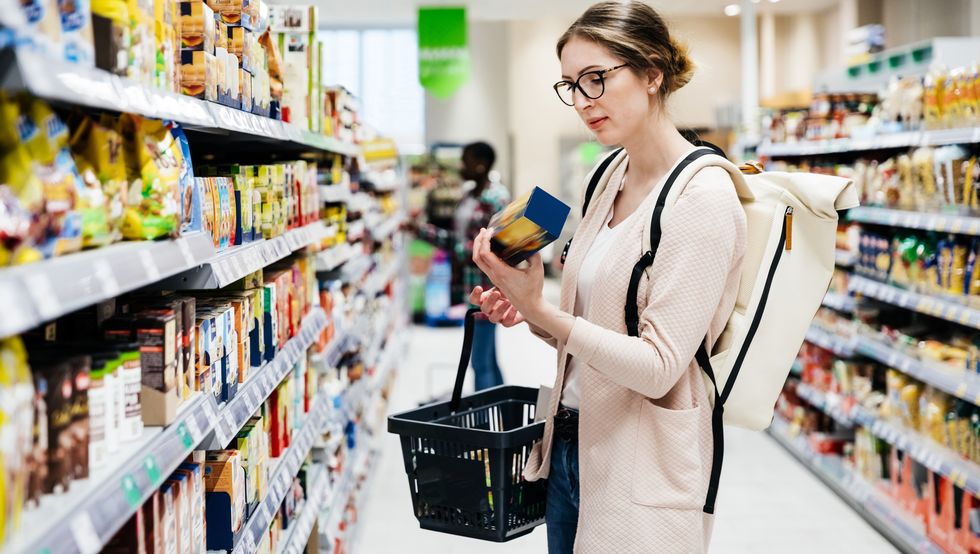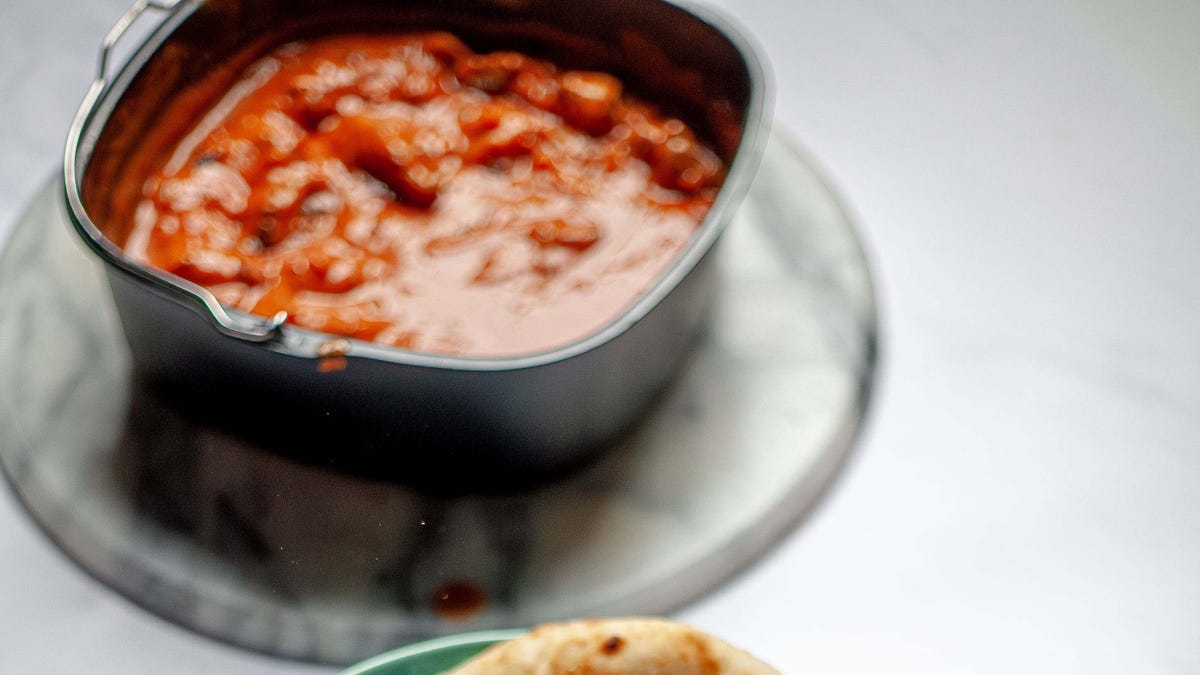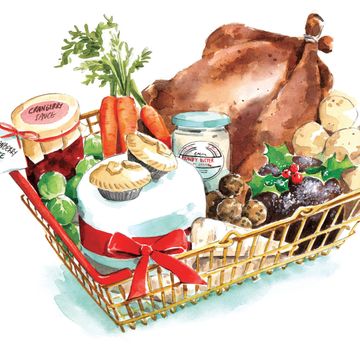Love Good Housekeeping and want more of our Triple-Tested recipes, home tips, fashion inspiration, essential consumer advice and so much more delivered to your inbox? Sign up to our FREE weekly newsletters, sit back and enjoy!
Despite grocery price inflation falling to 1.7%, nearly 60% of households remain worried about the rising cost of their shopping, according to new research by Kantar. "This is shoppers second biggest financial worry, only behind home energy bills," says Fraser McKevitt, head of retail and consumer insights, Kantar.
While we all wait to see how the Autumn Budget impacts our spending and savings, retailers are all too aware of this continued pressures on households and are 'doing their bit' to help shoppers keep the cost of the weekly shop down, he says. Figures show the number of sales promotions have increased year on year for the sixteenth month in a row. "More than half of all grocery trips include some kind of deal, and this proportion rises as the trolley gets bigger," says Fraser.
The cost-of-living crisis has made canny shoppers of us all, with trading down to cheaper products, discount and deal hunting, and price comparison now standard tactics. Meanwhile, supermarket chains have responding to the continuing challenge with price cuts, promotions and special prices for loyalty club members.
Although inflation in general has fallen significantly since it's high of more than 11% in 2022 (it's highest peak for 40 years) it doesn't mean prices themselves are falling. They are just rising less quickly. For instance, in the year to July 2024, olive oil was up 35.5%, and tea 8.4%, according to Office for National Statistics.
So what's worth it and what's not? Here's our rundown on where to find genuine bargains this Autumn:
How to save money on your supermarket shop
1. Take advantage of loyalty schemes
Loyalty schemes are still very much the hot ticket. Most supermarkets offer them, from the original Tesco Clubcard and Sainsbury's Nectar scheme to Lidl Plus and M&S Sparks card.
According to Mintel, 80% of us are members of a customer loyalty or reward scheme, with the majority believing that these schemes save them money. This year, the focus has been on special prices for loyalty club members. Loyalty has moved away from collecting points off the weekly shop to redeem later as money off coupons to taking front and centre stage at the checkout. These days, there are prices and there are member prices. As a consumer, it's impossible to ignore the benefit of simply signing up to all the loyalty schemes for the supermarkets you visit and cashing in where you can. (And in these days of digital wallets, there isn't even the inconvenience of fishing out the right card from an overflowing purse!).
But member pricing has its critics - both because not everyone benefits from this two-tier pricing system but because there's a suspicion the discounts may not always be as good as they're cracked up to be. The good news is that the Competition and Markets Authority has been looking into loyalty pricing tactics and is due to report back shortly. In the meantime, the best judge of whether you benefit is by checking your supermarket bill at the end of the month.
2. Switch to own-brands
You're probably a pro at this already, but if not, switching to own-brand products should be high on your list of cost-cutting actions. Some own-brand products are as good, if not better, as more well-known brands. For example, Asda’s Special Flakes Cereal costs just 99p for 500g and our taste testers at the GHI actually liked them more than a big name brand that currently costs £3.30 for 440g. See if your family notices the difference!
Try trading down with store cupboard essentials such as flour, rice and pasta, freezer essentials like peas and chips, and regular buys including toilet roll, ketchup, cooking oil, margarine, and crisps. Keep experimenting! Downshifting saves around 30% off a typical grocery bill, according to MoneySavingExpert.
3. Plan meals and portions carefully
Buying only what you need may sound like an obvious way to save money, but it can be easier said than done. Try planning your meals for the week ahead – or even for the month, if you have the energy. Once you have a few weeks' worth of plans, you can rotate them and save yourself lots of time.
It might sound old school but when you're shopping in-store, make a list before you head for the supermarket and stick to it!
Then, before you start cooking, use the Love Food Hate Waste Portion Calculator to figure out exactly how much to cook of each food – this should help reduce the amount of food you throw away. Simply choose an ingredient you plan to serve up – rice, for instance – then select the number of people you’re cooking for, and the tool will tell you how much you need. It even works out portion sizes for toddlers, younger children aged 4-10 years and older children aged 11-18 years, as well as adult portions.
Top tip: Don't assume the petrol at your local supermarket forecourt is the cheapest in town, use PetrolPrices app to keep an eye on the cheapest where you live.
4. Work out if you're really getting a good deal
Make sure you're not tempted by false bargains. Just because something has a 'yellow sticker' to show it has been reduced because it's near the 'use-by' or 'best-before' date, don't assume you are necessarily getting a good deal.
"Yellow stickers can offer great discounts, but always look at the original price, too," says Reduced Grub food blogger, Emma Bradley. "Check for better reductions later in the day when 20p off can turn into 75% off. Just make sure it's something you actually need."
If you really have found a bargain on a yellow sticker item, check if you can freeze it. According to Sainsbury's, 60% of us avoid buying reduced products because we don't think we'll be able to eat it in time. Pop your bargains in the freezer and you've got yourself a snack or a meal for later.
Top tip: Research shows that we tend to go for a mid-range choice and retailers know this! They stack their shelves with the most profitable items at eye-level. So if you're looking for cheaper options, look at the shelves above and below your line of vision as you'll probably find a better deal.
Supermarkets don't always make it easy to compare like for like. Download supermarket comparison apps such as mysupermarketcompare, trolley.co.uk or Priceable to find the price of specific products and check where's cheapest. Then you can check when you are shopping if the 'amazing discount' is really as good as it seems. It may be discounted but is it the cheapest you can find across all supermarkets?
Check out Approved Food
Approved Food is a discount online retailer which specialises in selling well-known brands and family favourites which have passed their ‘best before’ date, at a fraction of the price. For example, some of its current deals include Walkers Salt & Vinegar 50g bag of crisps, 39p (down from £1), Heinz Spaghetti and Sausages 49p for 200g (down from £1.25) and Dettol Anti-bacterial Surface Cleanser, 175ml for 50p (£2). There's free delivery when you spend over £35. Remember, it's a clearance website so deals come and go quickly!
"'Best before’ doesn't mean out of date. It has more to do with the quality of the product," says Andy Needham, managing director, Approved Food. "Once the best before date has passed, it is often the case that food remains in good condition and is still perfectly good and safe to eat and drink."
5. Check the temperature of your fridge
Yes, really! On average, each person in the UK wastes around 70 kg of food per year, which is equivalent to 140 meals.
As a country, we waste an estimated £14 billion worth of food every year. If you split this between all of the UK’s 28.1 million households, the average household would £470 annually on food that otherwise ends up in the bin, according to Waste Managed.
Check your fridge is set to the recommended temperature of 4°C or lower to ensure your fresh food and leftovers keep for as long as they should. If your fridge doesn’t have a digital temperature display, the Chill the Fridge Out tool offers advice on setting it to the correct temperature. Then use a fridge thermometer to check it’s cold enough. Bread and potatoes are the most wasted foods.
6. Make better use of your freezer
Keep an eye on the ‘use by’ dates of meat, fish and dairy products in your fridge. If you think you’re not going to use them before they go off, freeze them.
The same applies to things like packets of bacon or jars of passata you open but don’t use up in one go. Remember to label anything you put in the freezer clearly with the date it went in. Wherever possible, freeze things in the quantities required to cook your favourite recipes to avoid having to defrost more than you need.

















